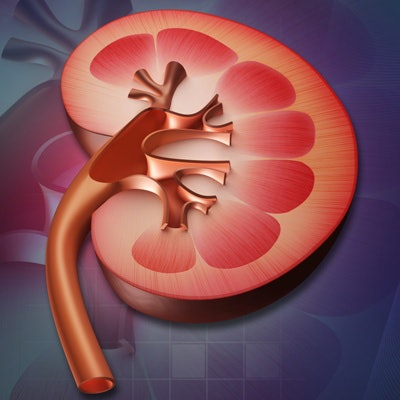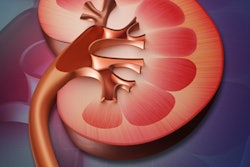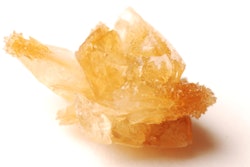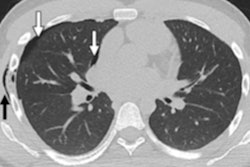
The CT utilization rate for children with kidney stones has gradually decreased in recent years, but researchers from Michigan are questioning whether the Image Gently safe-imaging initiative is the cause of the trend. Their findings were published online January 28 in the Journal of Urology.
Multiple studies have reported declining CT utilization rates for kidney stone evaluation in children and adults, roughly starting in late 2007. This shift coincides with the launch of the Image Gently campaign in August 2007 by a collection of radiologic societies that sought to improve the safety of pediatric imaging in the U.S., in part by eliminating unnecessary CT radiation exposure, noted first author Dr. Courtney Streur and colleagues from the University of Michigan.
To determine whether the campaign may have been responsible for this drop-off in pediatric CT use, the researchers analyzed medical claims data from a single U.S. commercial insurance provider for 12,734 children and 787,720 adults who underwent an imaging exam for kidney stones between 2001 and 2015.
Contrary to their initial supposition, they found that a greater percentage of both adults and children were receiving CT scans for kidney stones after Image Gently than before the initiative, indicating that the modality was being prescribed more often.
Although the proportion of patients getting CT scans rose, actual CT utilization per 1,000 patients decreased after 2007. But the authors noted that utilization fell more among adults than children, even though Image Gently was specifically targeted at pediatric CT use. They took this to mean that the campaign did not affect utilization that much.
| CT utilization rates for kidney stones pre- vs. postintervention | |||||
| Preintervention (2001-2007) | Postintervention (2007-2015) | ||||
| Children | 48.8% | 54% | |||
| Adults | 57.8% | 66.7% | |||
| Average quarterly change in CT exam use per 1,000 individuals | |||||
| Children | 5.07 more exams | 2.01 fewer exams | |||
| Adults | 7.22 more exams | 2.82 fewer exams | |||
The findings indicate that the movement toward decreasing CT use for kidney stones may be attributed to causes other than the campaign.
Offering a possible explanation for the greater decrease in adults, the authors pointed to the higher initial CT usage rate in adults compared with children, which allowed for greater room for improvement in terms of eliminating unnecessary CT exams. In addition, many of the children in the study underwent a CT scan without an initial ultrasound exam -- a practice that goes against most imaging guidelines.
"Nonetheless, given the persistent high utilization of CT, the mission of the campaign remains relevant," the authors wrote. "Future initiatives should focus on educating emergency providers about how kidney stone imaging guidelines differ for children and adults. Additionally, obtaining informed consent for studies involving ionizing radiation could help increase patient, family, and provider awareness."




















